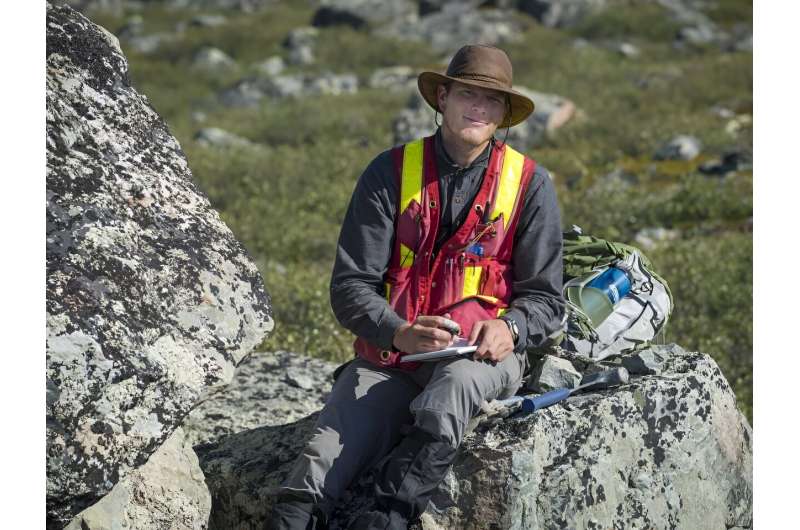This article has been reviewed according to Science X's editorial process and policies. Editors have highlighted the following attributes while ensuring the content's credibility:
fact-checked
trusted source
proofread
Earth's crust, tectonic plates gradually formed, geoscientists find

The Earth's crust continued a slow process of reworking for billions of years, rather than rapidly slowing its growth some 3 billion years ago, according to a Penn State-led research team. The new finding contradicts existing theories that suggest the rapid formation of tectonic plates earlier in Earth's history, researchers said.
They published the research in Geochemical Perspectives Letters.
The work may help answer a fundamental question about our planet and could hold clues as to the formation of other planets, according to lead author Jesse Reimink, assistant professor of geosciences.
"The dominating theory points to an inflection point some 3 billion years ago, implying we had a stagnant lid planet with no tectonic activity before a sudden shift to tectonic plates," Reimink said. "We've shown that's not the case."
To chart the formulation of the Earth's crust—or the crustal growth curve—researchers turned to more than 600,000 samples comprising the Earth's rock records database. Researchers across the globe—including at Penn State—have analyzed each rock sample in the record to determine geochemical contents and age. Researchers chose the rock records over mineral samples, which informed the theory of a more sudden formation, because they said the rock record is more sensitive and less prone to bias on those time scales.
Knowing that the reliability of the mineral record decreases through time, researchers recreated the crustal growth curve using the rock records. To do that, they developed a unique method for determining how igneous rocks dating to millions of years ago were reworked and reformed over time: experimentally demonstrating how the same rock could change in different ways over time.
Rocks can be reformed a number of ways, such as weathering into sediments or being remelted in the mantle, so researchers used this experimental data to inform novel mathematical tools capable of analyzing the rock records and working out the differences in sample changes.
"We calculated how much reworking has happened by looking at the composition of igneous rocks in a new way that teases out the proportion of sediments," Reimink said.
They used these calculations to calibrate the reworking documented in the rock records. Then, researchers calculated Earth's crustal growth curve using the new understanding of how the rocks were reformed. They compared the newly calculated curve to the rate of growth gleaned from mineral records by other experts.
Reimink and his team's work indicates the Earth's crust follows the path of the mantle—the layer on which the crust sits—suggesting a correlation between the two. It's not the first time geoscientists have suggested a more gradual crustal growth, Reimink said; however, it's the first time the rock record has been used to back it up.
"Our crustal growth curve matches the mantle record of growth, so it seems like those two signals are overlapping in a way that they did not when using the mineral record to create the crustal growth curve," Reimink said.
Reimink cautioned that the research improves on what researchers understand, but it's not the be-all and the end-all for crustal growth research. There are simply too few data points to speak to the vast time and space of the Earth's crust. However, Reimink said, further analyzing the existing data points may help inform investigations of other planets. Venus, for example, has no tectonic plates and could be a modern day example of early Earth.
"When did Earth and Venus become different?" Reimink asked. "And why did they become different? This crustal growth rate plays into that a lot. It tells the how, what and why of how planets evolved on different trajectories."
More information: J.R. Reimink et al, A whole-lithosphere view of continental growth, Geochemical Perspectives Letters (2023). DOI: 10.7185/geochemlet.2324
Provided by Pennsylvania State University




















